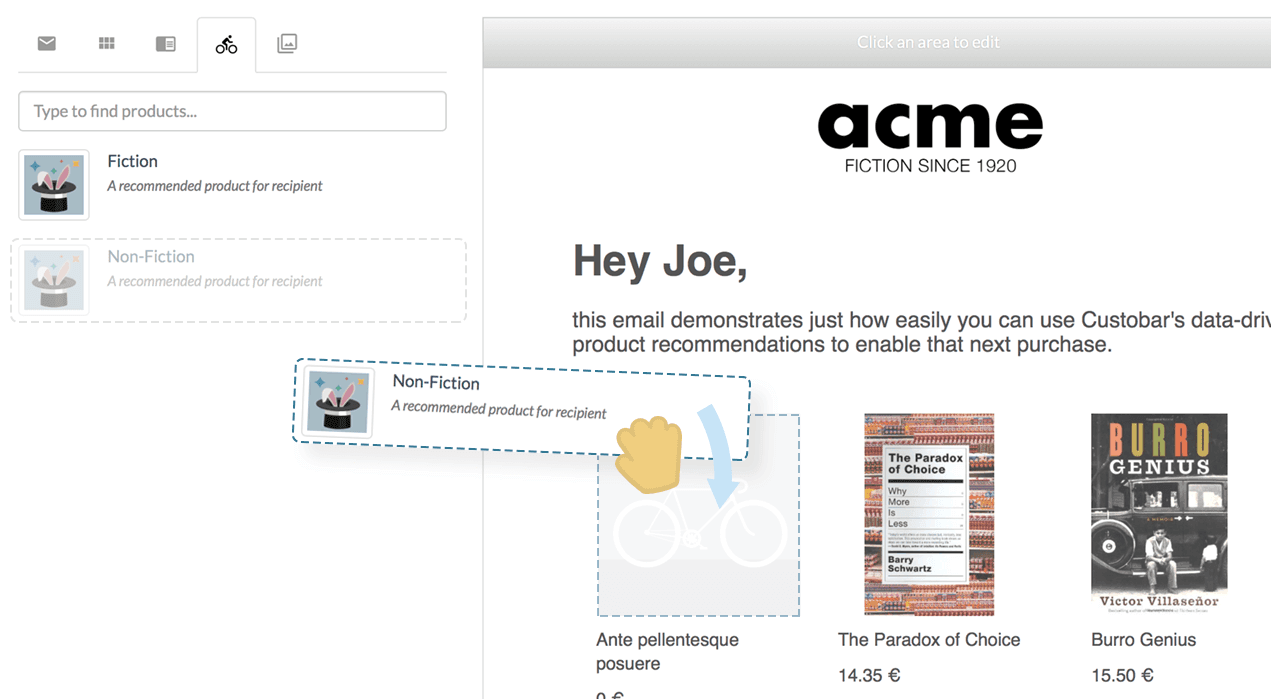Blog
Research Online, Purchase Offline

For a multi-channel retailer, understanding the ROPO (research online, purchase offline) effect is a great opportunity. The majority of shoppers research online before making their buying decisions. They do this either weeks before the purchase, from the comfort of their sofas at home, or only a few minutes before the purchase decision inside a physical store with their smartphone.
In an interview in Vogue Business Angela Ahrendts (Senior Vice President, Apple Retail) urges retailers to rethink their approach: "You can’t just look at the profitability of one store or the profitability of one app or the online business. You have to put it all together: one customer, one brand.”
In this post, we’ll show you how to secure the benefits of the ROPO effect with a marketing automation.
It’s good to remember that not all online product research lead to sales. A too aggressive approach might turn a customer away. On the other hand, without enough of an effort the customer might walk into a competitor's shop after getting the needed information from your site. With a customer data platform and marketing automation system the messaging for different audiences can be aligned effectively with your brand communication.
What is ROPO behavior?
Research Online, Purchase Offline refers to a customer behavior where a customer is visiting online to see product details, comparisons, reviews, testimonials, store availability, pricing etc. before purchasing a product from a physical store. Naturally this is happening all the time. With a customer data platform, retailers gain needed insight into the ROPO effect.
For different retail industries and product categories the ROPO audience is different. For example:
Include: Product category browse + Offline sales within 2 week Exclude: Online sales from the category within 2 week
Identify your offline customers
Create a reason for your customers to identify themselves in the store. For example a loyalty program or additional information related to the purchase. A handy mobile loyalty card with special offers is an easy step to start with. Identified offline sales is a main element for building bridges between online and offline customer experiences.
Identifying your customers in person
Collect material
To allow customers to do online research on your website, you need to have proper content to enable this research.
Automate product reviews requests
The simplest way to get user-generated content is just to ask for a review after the purchase. A timely and suitable feedback request is a nice way to show that you care about your customers.
Don’t forget to ask an opinion also from offline only shoppers.
Create an automation for:
Include: Online + Offline sales Exclude: Cancelled sales status
Feed product recommendations with offline sales
Many product recommendation systems account only online data. The setup might be easy but for the ROPO customers offline data should definitely be counted in for more accurate product related recommendations. And more generally, the more data you have, the better the product recommendations are - and still for most omni-channel retail offline sales is a BIG part of sales, so it should be included in the recommendations as well.
Show product related recommendation based on offline and online sales with the Product recommendation addon.
Comparisons, demonstrations, how to -videos etc.
While user-generated content might be difficult to get, you can always have sales staff -generated content. Personal blog posts by your own experts or charts based on your sales data.
Inspire and activate
When you have an audience for your ROPO consumers you can create a systematic approach to get benefits from them.
Start with insights
Find the products with plenty of views but only a few purchases and products which are mostly sold offline. How many customers have browses and only offline purchases? Or email activity and offline sales?
Maybe your sales staff also have some ideas. Your local staff often knows the most common questions related to the products. Do you already have answers to these questions on your site?
Set up a plan based on insights.
Marketing automation and micro-segmentation
Start with only a few automations in the first phase, before wasting time to built a 100% bullet proof strategy to cover all the possible scenarios. Even the simplest segmentation is better than no segmentation at all.
Ensure offline sales after online research via targeted email, sms or Ads
- Offer more insight, guidance or testimonials for browsed products
- Tell about alternatives, special product bundles and related offers
- Send information to low availability in shops nearby the customer
- Remind browsed products (aka abandoned product browse)
- Offer a discount
In-store experience
Promote things that are better in your physical store. When online is growing, 1:1 sessions in person might be a great opportunity to differentiate from a competitor.
Stay relevant
An abandoned shopping cart reminder is an effective way to activate customers but can easily do the direct opposite if you don’t exclude customers who already have bought the product from an offline store
Recognize potential 1st time buyers
To convert a mailing list subscriber to a 1st time buyer might need a more brand awareness than customers who know your benefits already.
- Create targeted brand awareness campaigns
- Highlight your benefits
Product recommendation
Include personalised product recommendations for customers within general marketing emails.
Measuring impact
Iterate
How did your customers react to these messages? What is the conversion rate? Is the online / offline balance as you assumed? What can you improve?
Marketing automations are amazing, but only if they work. Test and fail with different automations and segmentations - iteration and testing is the key to success! By tracing the results in actual sales numbers you will manage to find the most successful set of automations.
Support your sales personnel
It’s good to realise that now, more than ever, shoppers are using the internet also while physically inside a store. Build your site in a way that helps customers compare prices and features.
Additional note: Remember to keep product stock availability by stores updated on your site. Getting customers into a physical shop is not an easy task, and frustration is not what you are aiming for.
By the way, the opposite of ROPO is called Showrooming.





